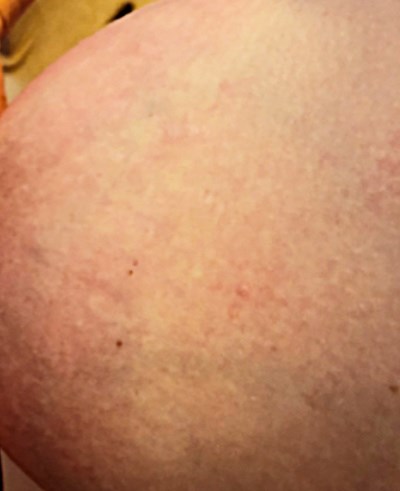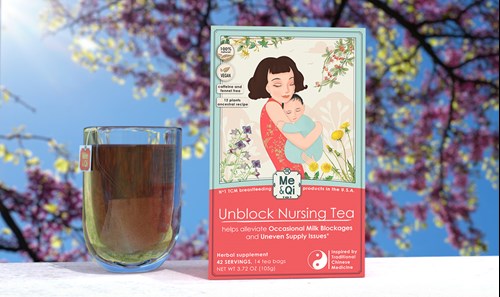Contents
- Can My Husband Clear My Clogged Milk Duct?
- What Is A Clogged Milk Duct And The Signs And Symptoms?
- What Is Mastitis And The Signs And Symptoms?
- What Causes A Clogged Milk Duct?
- How To Unclog A Milk Duct At Home?
- Then How Can The Husband Unclog Milk Duct Or Mastitis?
- Is it common to have the husband help with a clogged milk duct?
- Is it safe to drink breast milk?
- How does the breast milk taste?

Can My Husband Clear My Clogged Milk Duct?
New mothers often encounter unanticipated difficulties when breastfeeding for the first time, such as milk leakage during unexpected times or nipple discomfort such as itching, pain or even peeling caused by clogged milk ducts. These challenges are not uncommon and most of them can be solved at home.
It's worth noting that, frequent nursing or pumping is the most effective way to clear clogged milk ducts. Having a partner or husband assist with unclogging a duct can be a quick solution as they may have a stronger suction power and better technique, which could relieve the blockage faster.
What Is A Clogged Milk Duct And The Signs And Symptoms?
To answer the question ‘How do I unclog my wife’s milk duct?’, first of all, we need to know what is a clogged milk duct.
It's a condition where a small tube that carries milk from the breast to the nipple becomes blocked. This can happen during breastfeeding or even during pregnancy, due to factors like thickened breast milk, inflammation inside the breast tissue, or clogged nipple pores on the nipple.
Symptoms of a clogged milk duct include red skin, swollen and heavy breasts, thick or semi-solid breast milk, hard lumps or nodules, nipple blisters or bleb, or an uneven milk supply. These clogged ducts can also feel warm or hot to the touch, along with sharp and shooting pain, chest tightness, and itching in the breasts and nipples.
For more details on clogged milk duct pictures, early signs and symptoms, please refers to this great article.
What Is Mastitis And The Signs And Symptoms?
If a milk duct becomes clogged, it can lead to mastitis. It is a breast infection that can cause various symptoms, such as sharp, stabbing, or burning pain on breasts that worsen when breastfeeding. Women with mastitis may also have swelling, tenderness, warmth, hard lump, or red patch on breasts that can make it difficult to breastfeed. It may also lead to flu-like symptoms such as high fever if it's caused by a bacterial infection.
What Causes A Clogged Milk Duct?
There are various factors that can cause clogged milk ducts during breastfeeding. The primary one is a sudden change in the breastfeeding schedule, routine, or environment. In these cases, the mother's body does not have enough time to adapt to the new habits.
For example, if the mother weans too quickly or skips a feeding session due to travel, the accumulated milk can press against the ducts and lead to blockage. Other factors that can cause clogged milk ducts include improper latching and feeding position, wearing tight bras or clothes, lying on your stomach, and more.
Additionally, Traditional Chinese Medicine believes that the accumulation of Toxic Heat in the breast can also lead to clogged ducts, which can be caused by heavy and fatty diets, insufficient water intake, and emotional stress. For more details, check out this detailed article on the causes of the clogged milk duct.
How To Unclog A Milk Duct At Home?
If you are experiencing a clogged milk duct, here are some steps you can take to unclog it at home.
First of all, it is important to maintain a consistent breastfeeding schedule. Making sudden changes (eg: fast weaning) in milk supply can lead to issues such as engorgement, since it takes time for the body to adapt to new demand. It is important to keep balance in breastfeeding supply & demand. Gradual adjustments in milk supply can help the body adjust without complications.
To unclog an exist milk duct, try adding one extra nursing or pumping session. You can also use the higher-grade settings of the pumping machine to break up the blockage.
Correct latching if this is the problem, by making sure that the baby's mouth is wide open, lips are flanged out, tongue is positioned under the nipple, and mouth is covering a large part of the areola.
Besides these methods, try to be in a positive mood and manage your emotions and prioritize good sleep. Ask for help from your family if you need them to take care of the newborn and household chores. Try engaging in some light sports such as yoga or taking a walk in nature. Additionally, taking a nap during the day can help compensate for any lost sleep at night.
Avoid foods high in saturated fats such as cheese, chocolates, dairy and red meat. That is because, these heavy foods thicken the milk and increase Toxic Heat in the breasts.
To relieve sharp and shooting pain, use cold compresses or cabbage leaves on the affected area. Alternatively, painkillers can be used for a more effective solution compared to compresses. For mastitis, antibiotics is necessary in case of persistent high fever.

Nipple creams like lanolin, calamine lotion, and all-purpose nipple cream can provide relief for other breastfeeding-related issues such as nipple fissures, itching, peeling or breast eczema.
For more details, check out this article on treating and popping clogged milk duct.
For extra relief, consider Unblock Nursing Tea! This blend of natural herbs like licorice, goji berries, dandelion, and honeysuckle works together to address the root cause of clogged ducts (Toxic Heat in the breasts) and also helps with surface symptoms like swelling, and redness, a sharp pain breast itching and etc.
Then How Can The Husband Unclog Milk Duct Or Mastitis?
Besides above general methods against clogged milk duct, there are some special techniques that can be performed by the husband while suckling the blockage. This can increase the chance of clogging milk duct or mastitis.
- Dangled position
The husband should lay on his back with face looking up at the ceiling. The wife should kneel up and prop herself up on the elbows, allowing the breasts to dangle down above the husband’s mouth. This position takes advantage of the gravity, which can help break up the blockage. Give it a shot and see if it helps!
- Good latching
Ideally, the husband or partner should imitate the latching of a real baby. It is when the baby's mouth is opened wide and the nipple is taken deeply into the mouth, so that the baby's lips are flanged out like fish lips. The mouth should cover a large portion of the areola (the dark area surrounding the nipple) and the tongue should be positioned underneath the nipple. The baby should be able to suckle rhythmically and effectively, with visible and audible swallowing.
It is also recommended that the husband or partner positions his nose toward the affected breast area, which can potentially facilitate the unclogging process.
- Massage at the same time
Gently massaging the breast while suckling may stimulate the flow of milk. Check this detailed article on the right breast massage techniques.
- Using hot pad
Applying warm pad before and during the husband’s suckling. The heat can potentially speed up the milk flow.
- Support by Husband
It's important for the husband to provide support in various ways to help prevent clogged milk ducts caused by accumulation of Toxic Heat.
This includes taking care of some household tasks, such as cooking and cleaning, to give the mother time to breastfeed and rest. Doing light exercise together can also help reduce stress and promote overall well-being for both partners.
Additionally, the husband can help soothe and care for the baby when they are crying, which can help reduce emotional stress on the mother.
Also, experimenting with more nutritious food options alongside the mother can help lower the buildup of toxic heat in the body.
Is it common to have the husband help with a clogged milk duct?

It may come as a surprise, but a significant number of people are searching for information on how the husbands or partners can help with clogged milk ducts. In fact, up to 10,000 searches are made each month on Google for the topic "husband unclog milk duct."
This just goes to show that many mothers are seeking support from their husbands while breastfeeding. Even one mother said, "He pulled it out. He had a cup next to him. He was pulling out and spitting into this cup, and I've never been more in love in my life".
Is it safe to drink breast milk?
Yes, it is generally safe to drink breast milk as an adult. In fact, it might have some surprising health benefits. As we know, breast milk is designed to help babies build their immune systems. It's loaded with antibodies and white blood cells that protect against bacteria and virus. For example, if a baby is fighting an illness, scientists have found that the number of white blood cells in their mother's breast milk can increase by up to 94%. How amazing is that?
Besides health benefits, there is a term called 'Adult Nursing Relationship" or ANR that the women breastfeed their partners or husbands regularly. It gives men an opportunity to become happy and cheerful and promotes erotic lactation. While for women, it increases intimacy and gives them a feeling to love and to be loved.
However, it's important to get to know someone well before starting an Adult Nursing Relationship because breast milk is a bodily fluid, and there is a risk of contracting diseases such as syphilis, HIV, hepatitis B, and C.
How does the breast milk taste?
Partners may initially feel hesitant about helping with clogged milk ducts due to concerns about the taste or texture of breast milk.
It's understandable for partners to feel uncomfortable, but helping to unclog milk ducts will put an end to the mother's suffering and support the baby's health. Besides, it's important to remember that breast milk is a natural substance that provides essential nutrition and immune support to the baby.
In fact, the breast milk is not that unpleasant. It has a taste similar to milk, slightly differ from the store-bought milk you are used to. The taste is commonly compared to "sweetened almond milk," but it can vary depending on the mother's diet and the time of day. Some mothers who have tasted it describe it like honey, melted ice cream, sugar water, cucumbers or more.

